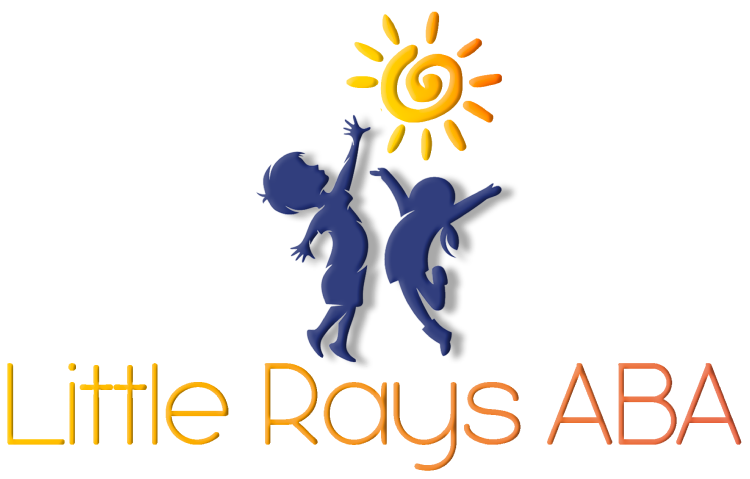
Autistic Shutdown vs Dissociation: Key Differences Explained
Autistic Shutdown vs Dissociation
Autism is a spectrum, and every individual experiences it differently. One aspect that is often misunderstood is how individuals with autism may respond to overwhelming stimuli. Two terms that frequently come up in these discussions are "autistic shutdown" and "dissociation." While they may seem similar on the surface, they are distinct responses that require different approaches to support.
In this blog post, we will explore the differences between an autistic shutdown and dissociation, providing an in-depth understanding of what each term means, the signs to look out for, and how parents, caregivers, and educators can provide the right support during these challenging moments.
What Is an Autistic Shutdown?
An autistic shutdown is a response to overwhelming sensory input, stress, or anxiety that results in an individual withdrawing from their environment and from interaction with others. During a shutdown, a person may appear unresponsive or may engage in minimal communication, both verbal and non-verbal.
Characteristics of an Autistic Shutdown
While every autistic individual may experience a shutdown differently, some common signs include:
- Non-responsiveness: The individual may not respond to verbal cues or attempts to engage them.
- Physical withdrawal: This could involve moving to a quiet space, covering ears, or shutting their eyes to block out sensory input.
- Mute or reduced speech: An individual might stop speaking altogether or speak in a limited, minimal way.
- Body language: The person may show signs of distress, such as stiffening up, trembling, or curling up in a protective posture.
- Difficulty processing information: An individual in a shutdown state may find it challenging to process sensory stimuli, thoughts, or even simple tasks.
- Increased sensory sensitivity: Sounds, lights, and textures might feel unbearable, causing the individual to retreat or shut down further.
Causes of Autistic Shutdowns
Autistic shutdowns can be triggered by a variety of factors, including:
- Sensory overload: Too much sensory input (e.g., bright lights, loud noises, strong smells) can be overwhelming.
- Stress and anxiety: Difficult social situations, changes in routine, or emotional overload can lead to a shutdown.
- Fatigue: Long periods of social interaction or concentrating on tasks may cause the individual to become exhausted, triggering a shutdown.
- Overstimulation: Being in environments with a lot of activity or stimuli can make it hard for the person to process what’s going on, leading them to shut down.
How to Support Someone During an Autistic Shutdown
- Create a calm, quiet space: Provide a place where the person can retreat to, free from overwhelming stimuli.
- Use a gentle approach: If the individual is non-verbal or non-responsive, avoid overwhelming them with questions or demands. Let them have the space they need.
- Offer reassurance: In some cases, verbal reassurance or gentle touch may help, but be sure to gauge the individual’s comfort level.
- Give time to recover: Recovery from a shutdown may take time. Be patient and avoid rushing the individual back into social situations or activities.
- Observe triggers: Keep track of situations that may lead to shutdowns to help anticipate and manage them in the future.
What Is Dissociation?
Dissociation is a psychological phenomenon where an individual disconnects from their thoughts, feelings, memories, or sense of identity. For individuals with autism, dissociation can be a coping mechanism to manage stress or trauma. Unlike a shutdown, dissociation often involves a detachment from reality, where the individual might feel detached from their body, or from the environment, or have an altered sense of time.
Characteristics of Dissociation
Dissociation can look different for each individual, but some common signs include:
- Disconnection from reality: The individual may seem “spaced out” or appear as though they are in a daydream-like state.
- Loss of awareness: The person may not be aware of their surroundings, people, or events happening around them.
- Memory gaps: An individual may have trouble remembering things that happened during the dissociative episode, or they may feel like they “lost time.”
- Feeling detached from the body: Some individuals may describe the feeling of watching themselves from the outside or feeling like their body isn’t their own.
- Emotional numbing: The individual may seem emotionally distant or disconnected, even in situations where emotions would typically be expressed.
Causes of Dissociation
Dissociation can be caused by several factors, including:
- Stress or trauma: Individuals may dissociate as a response to emotional trauma, including past experiences of abuse, bullying, or overwhelming situations.
- Chronic anxiety or sensory overload: Ongoing stress or anxiety can lead to dissociation as the brain attempts to protect itself by disconnecting from intense feelings or thoughts.
- Coping with overwhelming emotions: Some individuals may dissociate to avoid experiencing feelings of anger, fear, or sadness that they can’t manage in the moment.
How to Support Someone Experiencing Dissociation
- Grounding techniques: Encourage grounding exercises, such as focusing on sensory input (like touching something with a distinct texture), breathing exercises, or focusing on the present moment.
- Provide reassurance: Gently reassure the individual that they are safe, and let them know you are there to support them.
- Use calming strategies: Helping the person engage in deep breathing or redirecting their focus to a calming activity can assist them in returning to the present moment.
- Create a safe environment: Reducing external stressors and creating a space where the individual feels secure can prevent further dissociative episodes.
- Work with a therapist: Professional therapy, such as trauma-focused therapy, can help individuals address the underlying causes of dissociation and develop healthy coping mechanisms.
Autistic Shutdown vs Dissociation: Key Differences
While both autistic shutdowns and dissociation involve a withdrawal or detachment from the environment, there are key differences between the two:
1. Cause and Trigger
- Shutdown: Autistic shutdowns are typically caused by sensory overload, stress, or fatigue. They are often a response to external stimuli that the individual finds overwhelming.
- Dissociation: Dissociation is more likely to be triggered by emotional distress, trauma, or psychological stress. It is often a protective response to overwhelming emotions or memories.
2. Response to the Environment
- Shutdown: During a shutdown, the individual may physically withdraw, isolate themselves, and may appear unresponsive to external stimuli.
- Dissociation: In dissociation, the individual may still appear physically present but is mentally disengaged, feeling disconnected from their thoughts, body, or surroundings.
3. Duration and Recovery
- Shutdown: Recovery from a shutdown may take some time, and the person may need to rest in a calm environment to regain energy and process the stimuli.
- Dissociation: Dissociative episodes may be more transient, lasting from minutes to hours. Recovery involves reconnecting with the present moment and addressing any underlying emotional triggers.
4. Signs and Symptoms
- Shutdown: Signs include physical withdrawal, muted speech, non-responsiveness, and an inability to process sensory input.
- Dissociation: Signs include detachment from reality, memory gaps, emotional numbing, and feeling disconnected from the body.
How to Recognize and Address the Differences
Recognizing the differences between an autistic shutdown and dissociation can help parents, caregivers, and educators respond appropriately and provide the right support for the individual. Here are some tips:
- Observe the triggers: Understanding the causes of each response (sensory overload vs. emotional distress) can help differentiate between the two.
- Evaluate the person’s level of awareness: During a shutdown, the individual may still be aware of their surroundings but is unable to engage. During dissociation, they may be unaware of what’s happening around them.
- Provide tailored support: For shutdowns, offer a quiet space and avoid overwhelming the individual. For dissociation, use grounding techniques to bring the individual back to the present.
Final Thoughts
Both autistic shutdowns and dissociative episodes can be distressing for the individual and those around them. Understanding the differences between these two responses is crucial for providing the right kind of support. While an autistic shutdown may require sensory relief and space, dissociation often requires grounding techniques and emotional reassurance.
If you’re looking for support in managing these responses or if you need assistance in developing strategies to help your child cope, Little Rays ABA can provide personalized assistance. Our team specializes in helping children with autism navigate challenging moments and develop effective coping mechanisms. Contact us today!
Frequently Asked Questions
Can an autistic shutdown be prevented?
While it may not always be preventable, identifying and managing triggers, reducing sensory overload, and creating a calm environment can help minimize the frequency of shutdowns.
How long do dissociative episodes last?
Dissociative episodes can last anywhere from a few minutes to several hours, depending on the individual and the cause of the dissociation.
What should I do if my child experiences frequent shutdowns or dissociation?
It’s important to work with a professional, such as a therapist or ABA practitioner, to understand the underlying causes and develop personalized strategies to address these challenges effectively.
Sources:
- https://autismspectrumnews.org/navigating-autistic-shutdown-and-burnout-through-a-neurodiversity-affirming-approach/
- https://www.autismspeaks.org/sensory-issues
- https://www.autismparentingmagazine.com/autism-and-dissociation/
- https://www.researchgate.net/publication/359815494_Dissociation_in_Autism_Spectrum_Disorders_An_Under-Recognized_Symptom
- https://www.leicspart.nhs.uk/autism-space/health-and-lifestyle/meltdowns-and-shutdowns/
Related Posts





